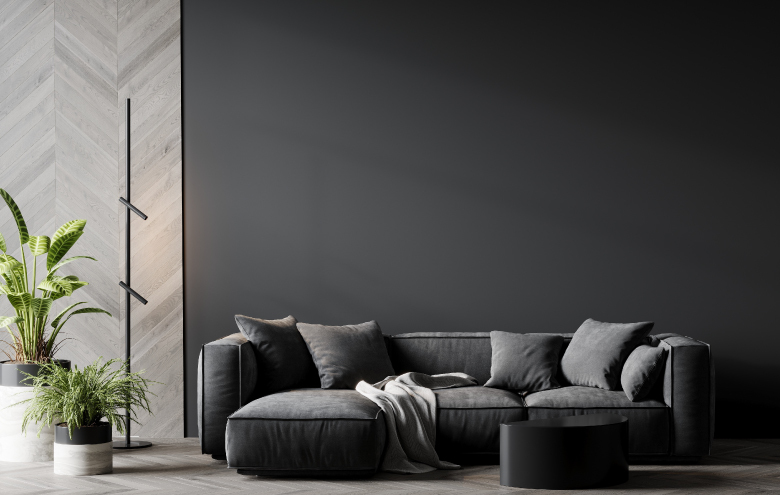
Dark Walls in Small Rooms: Tips to Make It Look Spacious
There’s something effortlessly stylish about using dark-coloured wall paint in a small room. Deep shades can add warmth, depth and character, giving the space a modern and inviting feel. Yet many shy away from dark wall colours in compact rooms, worried that they’ll shrink the room, make it gloomy, or overpower the decor. The good news? With the right approach, using a dark colour for wall or a thoughtful dark colour combination for walls can actually make a small room feel cosy, sophisticated and surprisingly spacious.
Why Choose Dark Walls in a Small Room?
When you think about small rooms, the default advice is often “go light and bright”, but dark walls have their own magic. They absorb light rather than reflect it, which can reduce glare, highlight furniture silhouettes and create a sense of enclosure that feels warm rather than cramped. In a small room with limited floor space, a well-chosen deep hue can draw the eye around the entire space rather than just across it, turning limitations into design strengths.
As homes evolve and design tastes shift, brands like British Paints now offer high-quality deep-shade options that look rich even in tight spaces. Their premium finishes are developed to maintain richness without making the room feel cave-like, giving you the confidence to explore bold palettes.
Practical Tips for Using Dark Colour Wall Paint in Small Rooms
1. Choose the Right Tone for the Room
Not all dark wall colours provide the same depth. A charcoal grey will feel different from a navy or a forest green. In rooms with little natural light, mid-tonal dark shades (rather than the deepest black or ebony) often work best. They add drama but still let some light in. In a well-lit space, richer tones like deep teal, plum or moody blue, British Paints offers shades like Odyssey and Rhapsody that can make a stunning backdrop.
2. Use a Single Wall or Accent Area
If you’re hesitant about going fully dark on all four walls, consider a feature wall instead. Picking one wall for the deep tone, ideally the wall behind the bed or sofa, and keeping the others lighter helps the room feel deeper without making it feel closed in. This type of dark colour combination for walls gives you the impact of dark paint with balance.
3. Maximise Vertical Lines and Height
In small rooms, emphasising height helps. If you paint the wall and continue the dark colour slightly onto the ceiling or use moulding to draw the wall upward, you extend the visual vertical space. Pairing the dark wall with lighter ceilings or trim also lifts the eye. British Paints’ palettes often include coordinating shades for trims and ceilings to create harmonious blends.
4. Reflect Light Intelligently
While deep hues absorb light, you can counteract that by emphasising reflective surfaces. Use mirrors, metallic finishes, glossy textures, or even a dark satin shade rather than a completely matte one to keep surfaces lively. Lamps, wall washers and indirect lighting are handy manage the balance so your dark walls don’t feel flat.
5. Coordinate Decor to Match the Mood
Dark walls set a mood, so your furniture, fabrics and accessories should work with it rather than against it. Use lighter coloured linens or cushions to break the surface and consider warm wood tones or brass accents to lift the richness. A well-selected dark colour for wall becomes the backdrop, not the focal point, allowing your furniture and decor to stand out.
6. Mind the Flooring and Trim
The transition between wall and floor becomes more critical with dark colours. Use contrast at the base of the wall (skirting, trim) to ‘ground’ the room and prevent it from feeling boxed in. You might pick a slightly lighter shade from the same family as your dark paint for continuity without monotony.
Common Mistakes to Avoid
Painting all four walls in the darkest shade without any variation in lighting or decor can make a small room feel oppressive.
Using a flat, non-reflective finish in a room with very little natural light, you’ll lose the depth and richness the colour could bring.
Failing to test paint samples in the actual light of the room. Always try a swatch and observe it at different times of day.
Ignoring the trim, ceiling and flooring decisions. Dark walls demand consideration of the entire visual palette.
Dark walls in a small room can transform the space from ordinary to elegant. The trick lies not in avoiding deep shades, but in applying them with intention: choosing the right tone, balancing light and decor and carefully coordinating finishes. When done well, what seems counter-intuitive, a dark room making the space feel larger, becomes entirely possible.
With premium paint brands like British Paints offering rich dark-shade collections and high-quality finishes, you can confidently experiment with dark wall colours and dark colour combination for walls, even in rooms where space is limited. The result? A small room that feels stylish, expansive and full of personality, rather than subdued or cramped.
FAQs
Q: Can I use dark walls in a room with little natural light?
A: Yes, you can use dark walls in a room with little natural light if you choose slightly lighter dark shades, use good artificial lighting, incorporate mirrors and reflective décor, and keep ceilings and trims lighter to balance and offset the effect of limited daylight.
Q: How do I balance dark walls with décor?
A: Balance by introducing contrast, lighter furniture, metallic accents, textured fabrics and plenty of layers. Make sure your furnishings complement the wall rather than compete with it.
Q: Which dark colours are best for small rooms?
A: Mid-tonal darks like charcoal, deep slate, muted navy or forest green are ideal. They have enough depth for drama and enough brightness to keep the room from feeling closed in.
Q: Should I paint all four walls dark in a small room?
A: It’s possible, but riskier. If you do, keep ceilings, trims and flooring light and incorporate plenty of light sources. Otherwise, focus the dark colour on one or two walls for better balance.
Q: Do dark walls work with patterned wallpaper or textures?
A: Yes, dark walls work beautifully with patterned wallpaper or textured finishes, as patterns and textures add depth and character to the space; just ensure the colours are well-coordinated and maintain enough contrast so the design stands out clearly against the dark backdrop.
Q: How do I make a small dark-walled room look brighter?
A: Increase artificial lighting, use mirrors, choose glossy or satin finishes, mix in lighter textiles and floor surfaces and trim the dark wall with a lighter ceiling or baseboard to visually lift the space.



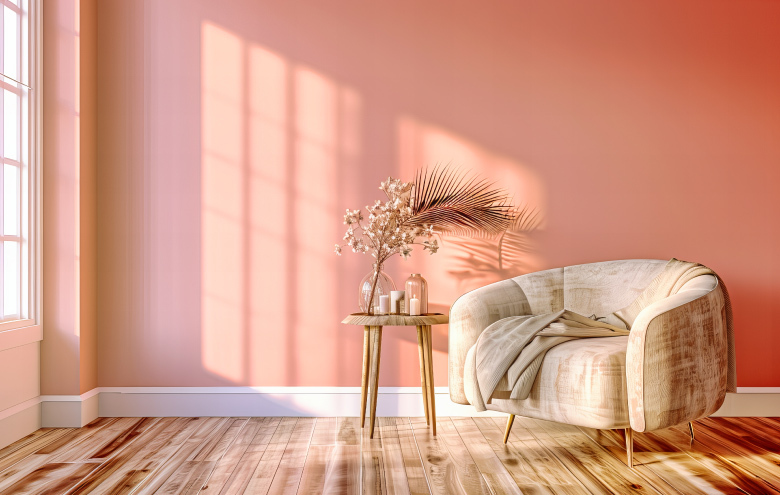
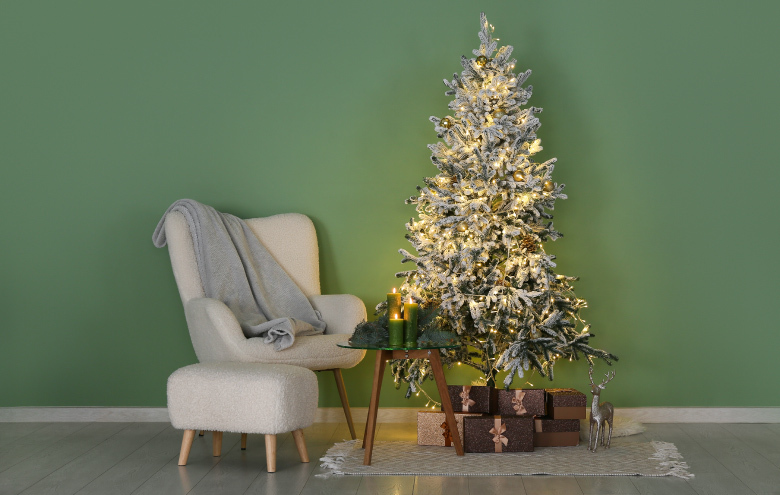

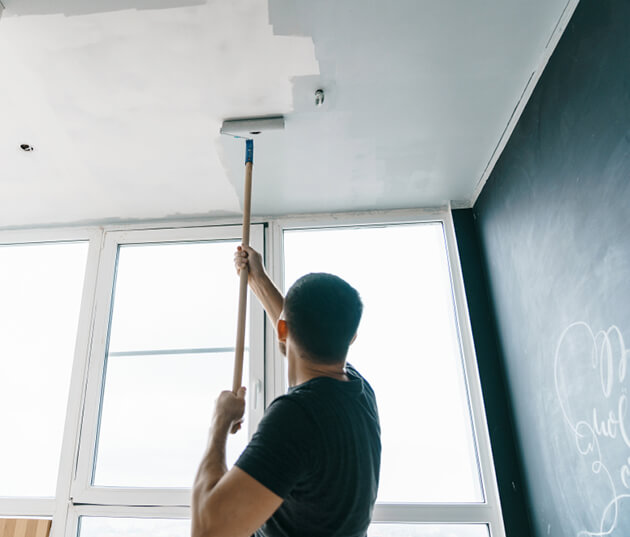
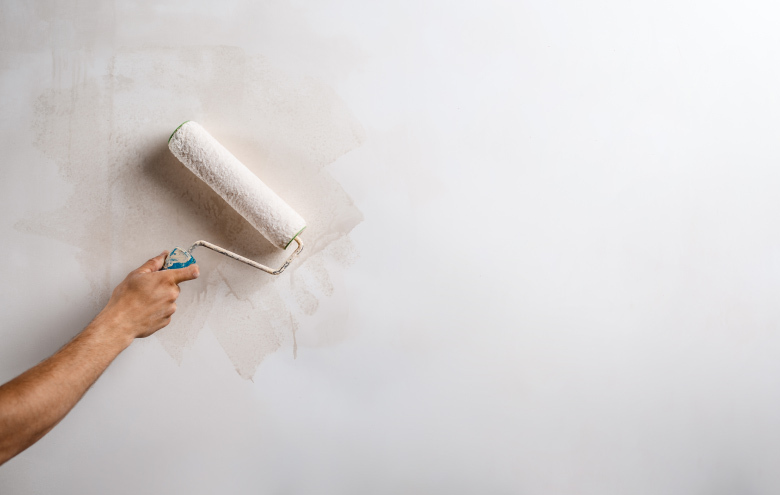


Newsletter
Subscribe to our newsletter and receive the latest inspiration and design advice, straight to your inbox.
Signin with your Registered Email
Signup here and find your Wishlist
You have successfully
updated your password.
preview
tell
space
mood
activity
vastu
sun sign
Please speak the color name*
a born
natural!